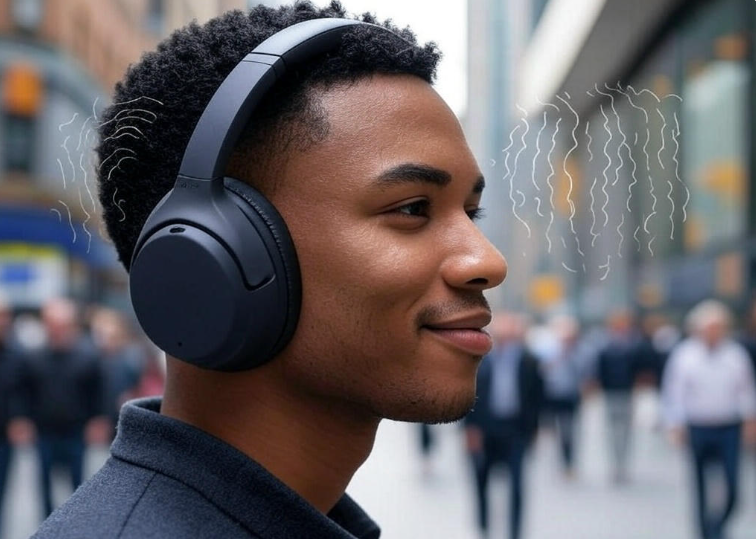The world of warehouse automation is undergoing a seismic shift, and Amazon is at the forefront with its latest innovation: the Vulcan robot. Unveiled at the company’s annual Delivering the Future event in Dortmund, Germany, in May 2025, Vulcan is Amazon’s first robot equipped with a sense of touch. This breakthrough technology promises to transform how fulfillment centers operate, blending advanced robotics with human-like capabilities to improve efficiency, safety, and scalability. In this blog post, we’ll explore the features of the Vulcan robot, its impact on warehouse operations, the implications for workers, and the broader significance of this technology in the evolving landscape of automation.
The Birth of Vulcan: A Leap in Robotics
Amazon has been a pioneer in warehouse automation since acquiring robotics startup Kiva Systems in 2012 for $775 million. Over the years, the company has deployed more than 750,000 robots across its global operations, handling tasks like transporting crates and packing boxes. However, one challenge has persisted: the delicate task of picking and stowing items in tightly packed storage pods. Historically, robots struggled with this due to a lack of sensory feedback, often resulting in damaged goods or inefficient operations. Enter Vulcan, a robotic system designed to address these limitations with a groundbreaking feature—a sense of touch.
Vulcan uses force-feedback sensors, computer vision, and machine learning to “feel” the items it handles. This allows the robot to adjust its grip strength in real time, ensuring it applies just the right amount of pressure to avoid damaging products. Unlike its predecessors—such as Sparrow, Cardinal, and Robin, which relied solely on suction cups and vision systems—Vulcan’s tactile capabilities enable it to manipulate a wider variety of items, from fragile electronics to awkwardly shaped packages. According to Amazon, Vulcan can handle approximately 75% of the item types in its warehouses, a significant improvement over previous models.
The robot’s design is practical rather than humanoid. It consists of a disembodied arm attached to a metal frame, equipped with a suction cup, a camera, and adaptive paddles. One arm handles picking and stowing, while a secondary arm with a hook manages the elastic bands covering storage bins. This setup allows Vulcan to navigate the chaotic, cluttered environment of Amazon’s fulfillment centers, where inventory pods hold up to 10 items each in a semi-random arrangement to maximize efficiency.
Enhancing Efficiency and Safety
Vulcan’s primary goal is to streamline warehouse operations. In Amazon’s fulfillment centers, stowing and picking are critical but labor-intensive tasks. Stowing involves placing items into storage pods, while picking requires retrieving specific items for customer orders. These tasks often require navigating tight spaces and handling diverse products, a challenge for robots without sensory feedback. Vulcan changes this by using its tactile sensors to push items aside gently and slide new ones into place without causing damage. Its stereo vision and physical AI further enhance its ability to distinguish between items as varied as socks and toothpaste tubes, learning from trial and error much like a human would.
The robot’s efficiency is impressive. Amazon reports that Vulcan operates at speeds comparable to human workers, stowing and picking items with precision. In pilot deployments in Spokane, Washington, and Hamburg, Germany, Vulcan has already processed over 500,000 orders, demonstrating its reliability in live warehouse settings. The company plans to roll out Vulcan across its fulfillment centers in Europe and the U.S. over the next two years, with the potential to handle up to 80% of the 14 billion items stowed annually in its warehouses.
Beyond efficiency, Vulcan significantly improves workplace safety. Warehouse work often involves physically demanding tasks, such as bending to reach low shelves or climbing ladders to access high ones. These repetitive motions can lead to strain and injuries over time. Vulcan is designed to handle items on the upper and lower shelves of Amazon’s 8-foot-tall storage pods, reducing the need for human workers to perform these awkward movements. By focusing on the “power zone”—the mid-height shelves where humans can work most comfortably—Vulcan complements human efforts, making jobs safer and less taxing.
The Human-Robot Collaboration Debate
The introduction of Vulcan has sparked a heated debate about the future of human workers in Amazon’s warehouses. On one hand, the robot’s capabilities raise concerns about job displacement. With Vulcan able to handle 75% of items and operate for up to 20-hour shifts, it’s easy to see why some fear it could replace human workers. The broader trend of automation, driven by AI and robotics, has already disrupted industries worldwide, and Amazon’s $25 billion investment in automation underscores its commitment to this shift. Critics worry that as robots like Vulcan become more capable, the need for human labor will diminish, potentially leading to significant job losses.
However, Amazon insists that Vulcan is not about replacing humans but enhancing their roles. Aaron Parness, Amazon’s director of applied science and the lead developer of Vulcan, has been vocal about the company’s vision for human-robot collaboration. He argues that full automation is neither feasible nor desirable, citing the “long tail” of items that still require human dexterity and judgment. For example, fluid containers or densely packed bins often need a human touch to handle safely. Parness emphasizes that Vulcan works alongside employees, taking on tedious and physically demanding tasks so humans can focus on more skilled roles.
This perspective is supported by Amazon’s track record. The company claims that its robotics systems have created hundreds of new job categories, including roles for training, operating, and maintaining robots. In a Louisiana warehouse, for instance, 30% of staff have transitioned to higher-tech positions without a reduction in overall employment. Workers like Kari Freitas Hardy, a picker in Spokane, have expressed relief at the prospect of reduced physical strain, noting that Vulcan’s ability to handle awkward zones makes their days easier. Amazon’s vision is to scale this technology across its network, improving operational efficiency while supporting employees through training initiatives and new career paths.
Broader Implications for the Automation Industry
Vulcan’s introduction has implications far beyond Amazon’s warehouses. The technology behind its sense of touch—combining force sensors, vision systems, and physical AI—represents a significant advancement in robotics. This breakthrough could pave the way for robots that operate in more complex, cluttered environments, such as homes or retail spaces. Parness has hinted at long-term possibilities, suggesting that similar technology could eventually power domestic robots capable of navigating the messiness of human living spaces. While this vision is years away, it underscores the transformative potential of Vulcan’s innovations.
In the short term, Vulcan sets a new standard for warehouse automation. Competitors like Walmart, FedEx, and DHL, which are also investing heavily in robotics, will likely take note. The ability to handle 75% of items with human-like precision gives Amazon a competitive edge, potentially allowing for faster delivery times and lower operational costs. This aligns with consumer expectations for rapid shipping, a demand that has intensified globally as e-commerce continues to grow. Vulcan’s rollout could also influence labor markets, prompting other companies to adopt similar technologies to address workforce shortages and rising costs.
Challenges and Ethical Considerations
Despite its promise, Vulcan is not without challenges. The technology, while advanced, is not yet capable of matching human dexterity in all scenarios. Logistics researchers note that tasks requiring the finesse of playing a piano concerto are still far beyond current robotic capabilities. Additionally, the semi-random arrangement of items in Amazon’s pods, while efficient for operations, creates a chaotic environment that even Vulcan may struggle with in edge cases. Ensuring the robot can handle the remaining 25% of items—those requiring more nuanced handling—will be a key area of focus for Amazon’s engineers.
Ethically, the rise of robots like Vulcan raises questions about the balance between automation and human labor. While Amazon emphasizes collaboration, the long-term impact on employment remains uncertain. The company’s history of prioritizing efficiency has sometimes come at the expense of worker well-being, as seen in past criticisms of its warehouse conditions. Ensuring that Vulcan’s deployment genuinely improves workers’ lives, rather than simply shifting the burden elsewhere, will be critical. Transparency about job creation and displacement, as well as investment in upskilling programs, will be essential to maintaining public trust.
A Vision for the Future
Amazon’s Vulcan robot is a testament to the power of innovation in addressing real-world challenges. By equipping robots with a sense of touch, Amazon has taken a significant step toward bridging the gap between human and machine capabilities. Vulcan not only enhances efficiency and safety in warehouses but also sets the stage for broader applications of tactile robotics. As the technology evolves, it could redefine how we interact with machines, both in industrial settings and in our daily lives.
For now, Vulcan represents a harmonious blend of automation and human effort, a model that other industries might emulate. Its rollout over the next two years will be closely watched, offering insights into the future of work in an increasingly automated world. As Amazon continues to push the boundaries of what’s possible, Vulcan stands as a symbol of progress—one that, for better or worse, is reshaping the landscape of warehouse operations and beyond.




